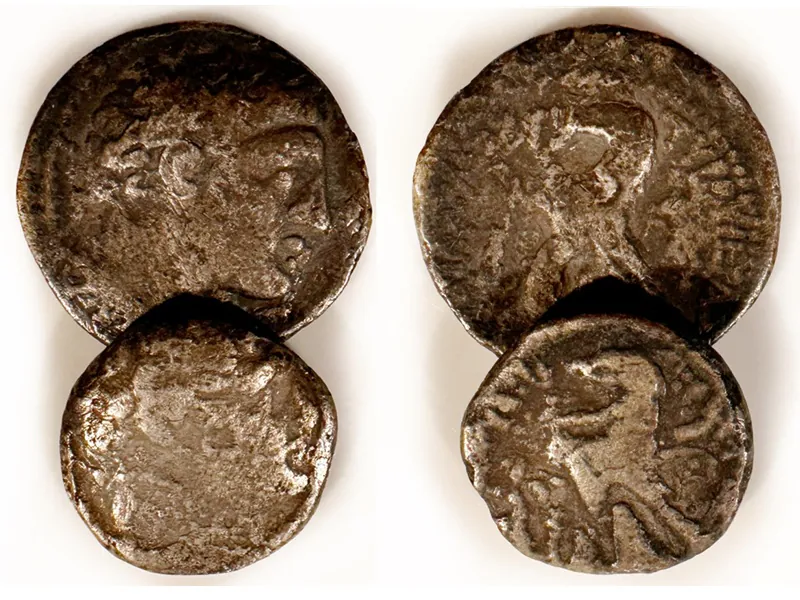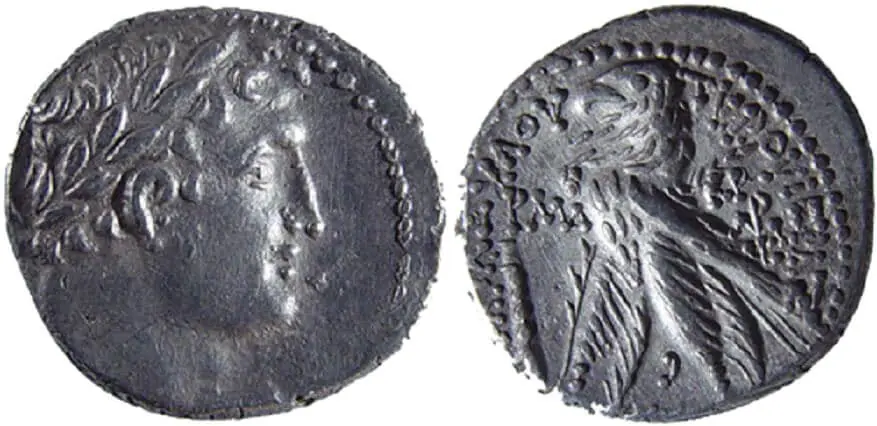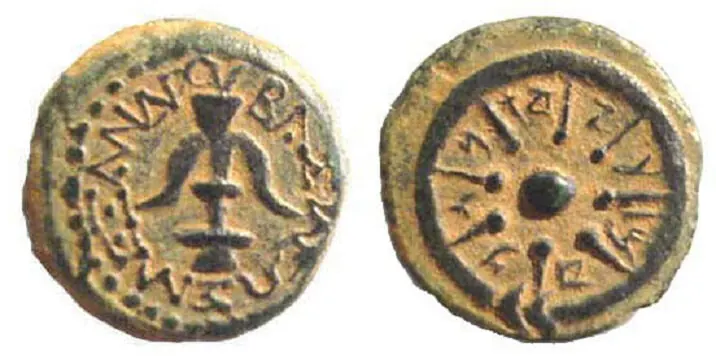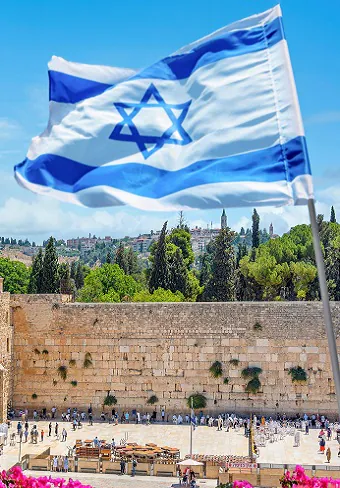The Tyrian Shekel: The Temple Tax Coin in the Time of Jesus

A crude Tyrian Shekel and half shekel, worn from circulating in the market for several decades. © Danny Herman
The Tyrian shekel holds a unique place in the Jewish religion as the official coin for the Jewish Temple tax during the first century CE. According to the Old Testament (Exodus 30:13; 38:25), every Jewish male above age 20 was required to contribute a half-shekel annually to the Temple. This wasn’t merely a religious formality, but a significant economic institution of the ancient Jewish world.
The Value of the Tax in Today’s Terms
The half-shekel payment corresponded to approximately 7 grams of silver, equivalent to the Greek didrachm (two drachmas). To put this in perspective, the Roman denarius, mentioned in Jesus’s parable of the vineyard workers (Matthew 20:2) as a day’s wage, contained about 3.4 grams of silver. Thus, the Temple tax represented roughly two days’ wages for an average laborer. In modern terms, this would approximate 50-75 USD, making it a substantial obligation for most families in antiquity.
The Value of the Revenue in Today’s Terms
The economic scale of this institution was remarkable. With an estimated Jewish population of 8-10 million in the first century CE, assuming adult males comprised roughly one-third of the population, the annual Temple tax revenue would have approached the equivalent of 150 million USD in today’s terms. This substantial income supported the Temple’s elaborate operations and maintenance.
Why did the Priests in Jerusalem Favor the Tyrian Shekel?
The Tyrian shekel’s design reflected its Phoenician origin, bearing the image of Melqart (the Phoenician Hercules) on one side and an eagle on the reverse. This imagery was potentially problematic for Jewish religious sensibilities regarding graven images. Why then did the priests favor the Tyrian Shekel?
I contributed to a research that demonstrated that what made the Tyrian shekel distinctive was its exceptional silver purity, consistently maintaining 907-94% silver content. Apparently, that is why the Temple authorities specifically required this coin for tax payments, rejecting any other denomination.

Tyrian Shekel from the 1st century AD. Since the priests of the temple in Jerusalem accepted the temple tax only in this currency, money changers around the Temple offered their services, converting foreign money to this coin type. Apparently the charge for this service was high, and it is this Jesus referred to when he said, “It is written, ‘My house will be called a house of prayer’, but you are making it a den of robbers” (Matthew 21:13). (C) Danny Herman
Additional Money Contributions to the Temple
Beyond the mandatory half-shekel tax, the Temple received numerous voluntary contributions. The Gospel of Mark (12:41-44) records Jesus observing temple donations and highlighting a poor widow’s contribution of two lepta (small copper coins). This account illustrates how the Temple’s economic system accommodated all levels of society, from the wealthy making large donations to the poorest offering their mites.
The lepton, mentioned in the widow’s mite story, represented the other end of the currency spectrum. These small bronze coins, notably minted by the Hasmonean king Alexander Jannaeus, circulated widely in Jerusalem and can still be found in archaeological digs today. Their accessibility to the poor ensured that everyone, regardless of economic status, could participate in Temple offerings.

Bronze Lepton coin. Such a coin is likely mentioned in Mark 12:44, and is known in modern research and literature as one of the ‘widow’s mites’. Its obverse shows an eight ray star, and its reverse depicts an anchor. The text along the edges reads (in Greek and Hebrew, or Aramaic): “[of] king Alexander”. (C) Danny Herman
Some Final Thoughts
This monetary system reveals much about the complex interplay of religion, economics, and politics in first-century Judea. The Temple tax, with its specific requirement for high-purity Tyrian shekels, illustrates how religious institutions could maintain certain autonomy even under Roman rule through economic mechanisms. It also demonstrates how ancient religious practices were intimately connected with practical economic considerations, creating a sophisticated system that balanced sacred obligations with monetary realities.
- See here a review of other coins mentioned in the New Testament.
- If you are considering purchasing an ancient Jewish coin contact us for consultation and reccomendation.
Short Video Explaining the Temple Tax Tyrian Shekel
Contact us to inquire more about Coins Mentioned in the New Testament:
Keep Exploring
-

The Tyrian Shekel: The Temple Tax Coin in the Time of Jesus










